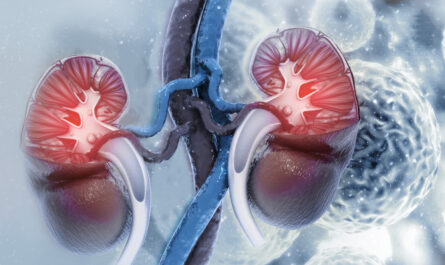
Shigella is a major cause of diarrhea globally, especially in developing countries. The bacteria causes a disease commonly known as shigellosis or bacillary dysentery. It is responsible for high morbidity and mortality rates worldwide, predominantly among young children. With the alarming increase in antimicrobial resistance among Shigella strains, prevention through vaccination is considered the most viable long-term strategy to control shigellosis. Various Shigella vaccines have been in development for many decades now. Here is an overview of the current status and future prospects of Shigella vaccines.
The Burden of Shigellosis
Shigellosis places a substantial disease burden globally with an estimated 131 million cases and 562,000 deaths annually, the majority among children under the age of 5 years in developing countries. High rates of diarrheal diseases have long-term effects on malnutrition, impaired growth, and cognitive development among children. Recurrent, severe infections can also cause chronic intestinal dysfunction known as post-infectious irritable bowel syndrome. The disease incidence is expected to rise further with high population density, poor hygiene, and contaminated water supplies especially in resource-limited settings.
Existing Vaccine Candidates
Several live-attenuated and killed whole-cell vaccines against the four Shigella serogroups—Shigella flexneri, S. sonnei, S. dysenteriae, and S. boydii—have been developed and tested over the decades.
– R~1MnxG~SBA~ live vaccine candidate developed by the National Institutes of Health demonstrated good immune responses and safety profile in Phase 1 and 2 studies. It is undergoing Phase 3 evaluation currently.
– Investigational killed whole-cell pentavalent (serogroups A, B, C, D, E) conjugate vaccine evaluated between 2003-2014 induced immune responses but showed limited protection against S. sonnei infections. Further optimization is being done.
– Japan has developed and licensed an oral S. sonnei live vaccine for military use but it is not commercially available.
– SK-EC~323~, a mutant of S. flexneri 2a developed in Korea showed good safety and immunogenicity in Phase 1 and 2 trials.
While these vaccine candidates hold promise, a globally effective and affordable Shigella vaccine is yet to be developed for widespread implementation.
Challenges in Shigella Vaccine Development
There are multiple technical challenges that have slowed down the development and introduction of a Shigella vaccine:
– Diverse serotypes: There are over 50 serotypes of the bacteria making multivalent coverage difficult. Serotype distribution also varies regionally.
– Immune complexity: Both mucosal and systemic immune responses are required for protection. Correlates of protection are not fully elucidated yet.
– Toxic formulation: Whole-cell formulations have shown unacceptable levels of reactogenicity and toxicity necessitating live-attenuated or subunit approaches.
– Safety concerns: Attenuated live vaccines pose risks of reverting to virulence especially in immunocompromised individuals. Inactivated versions lack optimal immunogenicity.
– Regulatory requirements: Stringent clinical trial endpoints are required by regulators to prove vaccine efficacy against a disease with high transmission rates.
– Commercial viability: Shigellosis primarily affects poor populations in developing countries limiting commercial appeal and large-scale production efforts by vaccine manufacturers.
Future Prospects and Conclusion
With the rising threat of antimicrobial resistance in Shigella, the global health community’s focus on a Shigella vaccine has increased in recent years. Several candidates currently in clinical evaluation hold promise but an optimally effective vaccine may require a multivalent approach covering major serotypes as well as mucosally delivered formulations to induce appropriate immune responses at the intestinal site of infection. Successful Phase 3 results of ongoing trials could aid prequalification and availability of the first licensed Shigella vaccine within this decade. Novel platform technologies and public-private partnerships would be crucial to overcome existing barriers and ensure long-term global access. With continued research and coordinated efforts, a breakthrough in Shigella immunization seems imminent to curb the massive disease burden of this important enteric pathogen.
In summary, Shigella remains a substantial cause of morbidity and mortality worldwide. Though various vaccine candidates hold promise, the development of a safe, effective and affordable globally available vaccine adapted for use in endemic countries faces technical, clinical and programmatic challenges. Concerted international efforts would be needed to translate the expanding vaccine pipeline into practical prevention solutions that can significantly curb the spread of this neglected enteric pathogen.
*Note:
- Source: Coherent Market Insights, Public sources, Desk research
2. We have leveraged AI tools to mine information and compile it


